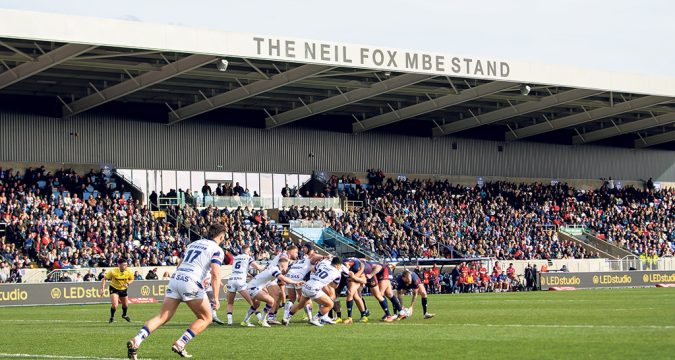
SOME people suggest that Super League hasn’t made much progress since its inaugural season in 1996.
And I can understand why they might say that.
We began with twelve teams and in the thirtieth iteration of Super League we still have twelve teams, although only five of the original twelve are competing in Super League in 2025.
They are Castleford, Leeds, St Helens, Warrington and Wigan. The other seven in that first year, listed alphabetically, were Bradford, Halifax, London Broncos, Oldham, Paris St Germain, Sheffield Eagles and Workington.
In 2025 they have been replaced by Catalans, Huddersfield, Hull FC, Hull KR, Leigh, Salford and Wakefield.
So what else has changed?
Undoubtedly a major change for the better has been the quality of stadia in which Super League matches are played.
Of the current twelve clubs, Hull FC, Leigh, Salford, St Helens, Warrington and Wigan are playing in stadiums that didn’t exist in 1996 and for the most part they offer far better facilities than the grounds that were left behind. Of the others, there have been significant ground developments at Catalans, Hull KR, Leeds and Wakefield.
And there are two stadiums that remain roughly similar to what they were like in 1996, although in quite contrasting ways.
In 1996 Huddersfield had only recently moved into what is now the John Smith’s Stadium, which is now 30 years old but which then could reasonably be described as the best stadium in the game. Not much has changed at the stadium, although the Giants’ ability to draw decent crowds seems to have declined over the years.
Then finally we have Castleford playing at The Jungle, their antiquated stadium that was improved marginally with some seats installed on the terrace facing the main stand to allow the club to generate more IMG gradings points.
But the essential structure of the stadium hasn’t changed for many years.
At one time a lot of stadiums were like Castleford’s.
My first memory of watching rugby league was on 25th October 1958, when I was present at Belle Vue as Wakefield Trinity defeated Workington Town 39-12.
Workington were a strong team in the 1950s and that was the first time Wakefield had ever beaten them at home. A young Neil Fox scored five tries and four goals for 23 of Wakefield’s points, but that is not why I can remember the game.
Wakefield’s second row forward Les Chamberlain suffered a broken leg in two places during that game. I was standing not far from where he suffered the injury and the snap of his leg breaking could be widely heard. It made a massive impression on me as a young child, so much so that it’s the one thing I can remember about that game.
Wakefield’s stadium in those days was very different to its current configuration. Whereas it now has a maximum capacity of around 9,300, in those days it could host crowds of up to 28,000, free of regulations in relation to health and safety. But if those fans could be reincarnated, they would hardly recognise the modern version of the Belle Vue stadium. They would be shocked at the reduced capacity but I hope they would be impressed by the recent changes that have been made, including the creation of the Neil Fox MBE Stand, which is a superb facility.
Castleford’s record attendance was 25,449 when they played a third-round Challenge Cup match against Hunslet on 9th March, 1935 and many of the fans who were there that day would have little trouble recognising the ground today if they could come back to life.
The Tigers have plans to replace the main stand at The Jungle and I hope they come to fruition soon. The club’s supporters have great affection for the old ground, but they surely deserve to see it move into a more modern age when it will be able to generate far more corporate income.
And it’s not just in England that we’ve seen a major improvement in stadia in recent years.
Lang Park, now named Suncorp Stadium, was redeveloped and reopened in 2003. Also in Queensland there are new stadiums in Townsville and the Gold Coast, while in New South Wales, Allianz Stadium in the heart of Sydney opened in 2022, while Commbank Stadium, the home of Parramatta, opened three years earlier. In Melbourne, AAMI Park, the home of the Storm, opened in 2010 and was a massive factor in the Storm increasing their support in the state of Victoria.
Also in Australia, Penrith Park, the home of the Panthers, is currently being totally redeveloped, while the venerable Leichardt Oval, one of the homes of the Wests Tigers, will have A$40 million spent on its improvement following pressure from the club and its supporters.
There are still some NRL stadia that urgently need to be upgraded, including Kogarah, the home of St George, Campbelltown, the second home of Wests Tigers, and GIO Stadium in the capital Canberra.
But it’s fair to say that better facilities generally lead to growing support.
Let’s hope we continue to see improvements in the years ahead.
First published in Rugby League World magazine, Issue 508 (May 2025)
